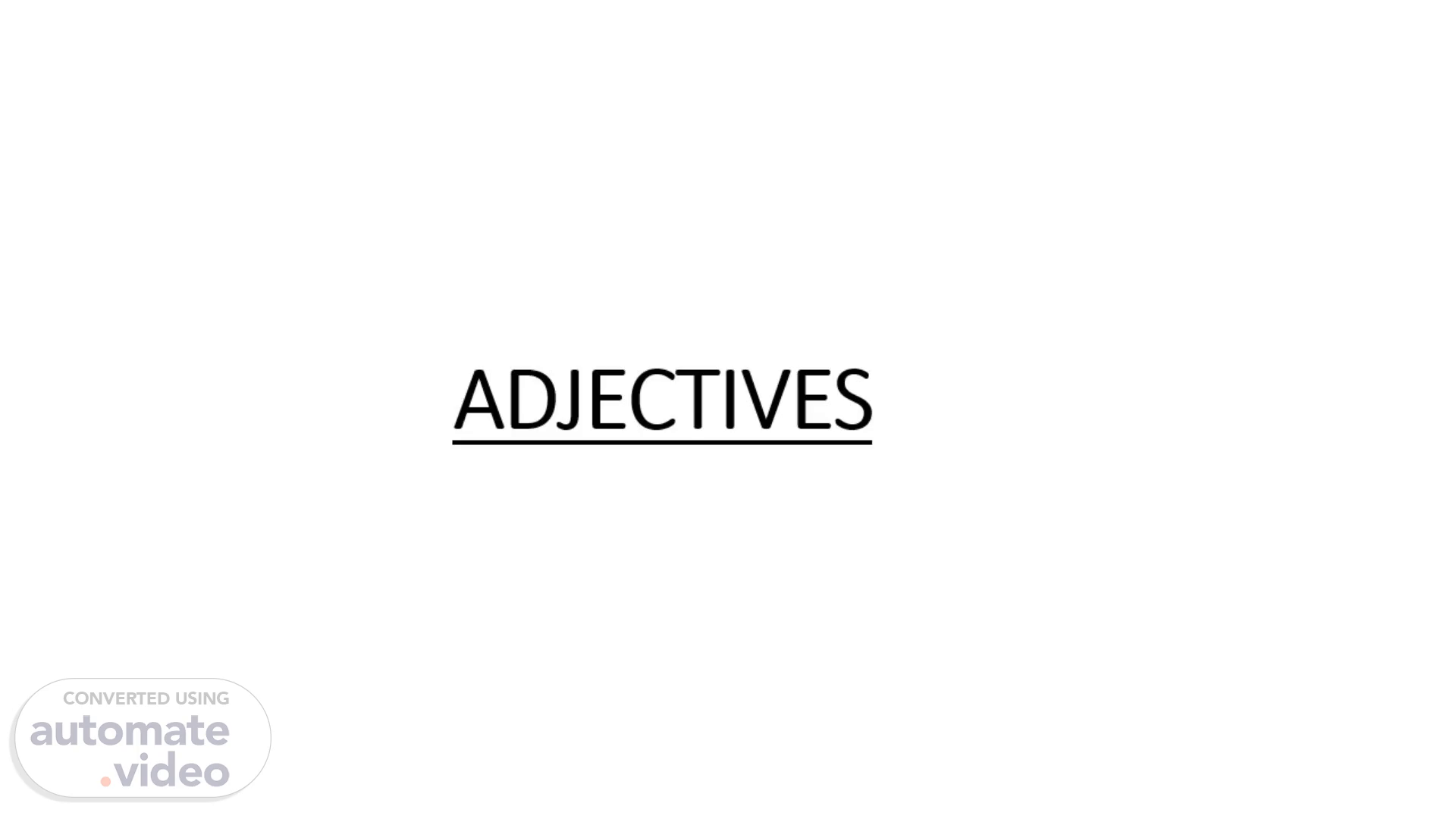Scene 1 (0s)
[Audio] ADJECTIVES. ADJECTIVES.
Scene 2 (5s)
[Audio] Defination Adjectives are words that describe or modify nouns and pronouns. They provide additional information about an object’s size, shape, age, color, origin, or material, enhancing the meaning of a sentence. Adjectives can make sentences more vivid and help convey precise information..
Scene 3 (25s)
[Audio] Types of Adjectives Descriptive Adjectives: Describe a noun’s qualities or states. •Example: blue sky, tall building, happy child. 2. Quantitative Adjectives: •Indicate the quantity of a noun. •Example: some apples, many people, ten cars..
Scene 4 (44s)
[Audio] Types of Adjectives 3.Demonstrative Adjectives: Point out specific nouns. Example: this book, those shoes, that car. 4.Possessive Adjectives: •Show ownership or possession. •Example: my dog, your house, her dress..
Scene 5 (1m 5s)
[Audio] Types Of Adjectives 5. Interrogative Adjectives: •Used in questions to modify nouns. •Example: Which movie are you watching? What time is it? 6.Distributive Adjectives: •Refer to individual members within a group. •Example: Each student, every person, either option. 7.Indefinite Adjectives: •Refer to non-specific items or quantities. •Example: any book, several problems, few opportunities..
Scene 6 (1m 43s)
[Audio] Degrees of Comparison Adjectives can express degrees of comparison through three forms: positive, comparative, and superlative. 1.Positive Degree: •Basic form of the adjective. •Example: She is tall. 2.Comparative Degree: •Compares two entities. •Usually formed by adding “-er” to the adjective or using “more” before the adjective. •Example: She is taller than her brother. This book is more interesting than that one..
Scene 7 (2m 17s)
[Audio] 3.Superlative Degree: •Compares more than two entities, indicating the extreme or highest degree. •Usually formed by adding “-est” to the adjective or using “most” before the adjective. •Example: She is the tallest in her class. This is the most interesting book I have ever read..
Scene 8 (2m 37s)
[Audio] Placement of Adjectives Adjectives typically come before the noun they modify in English. However, they can also follow a verb like “be,” “seem,” “become,” or “appear.” •Before the noun: She wore a beautiful dress. •After the verb: The dress is beautiful..
Scene 9 (2m 57s)
[Audio] Order of Adjectives When multiple adjectives are used to describe a single noun, they often follow a specific order: 1.Quantity (e.g., two, several) 2.Opinion (e.g., lovely, ugly) 3.Size (e.g., big, small) 4.Age (e.g., old, new) 5.Shape (e.g., round, square) 6.Color (e.g., red, blue) 7.Origin (e.g., French, American) 8.Material (e.g., wooden, plastic) 9.Purpose (e.g., cooking, sleeping) •Example: I bought a beautiful (opinion), small (size), round (shape), red (color), Italian (origin) vase..
